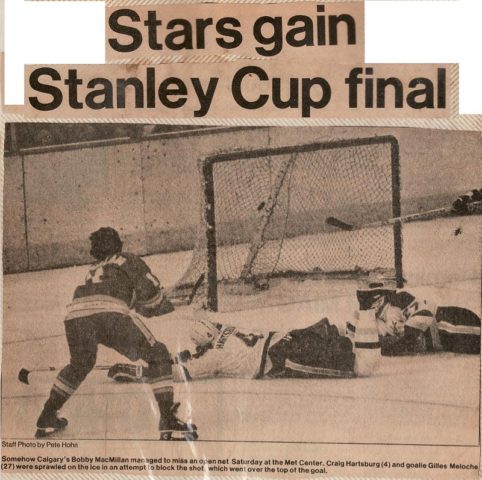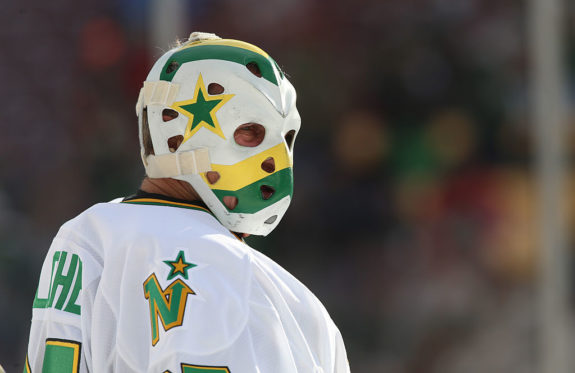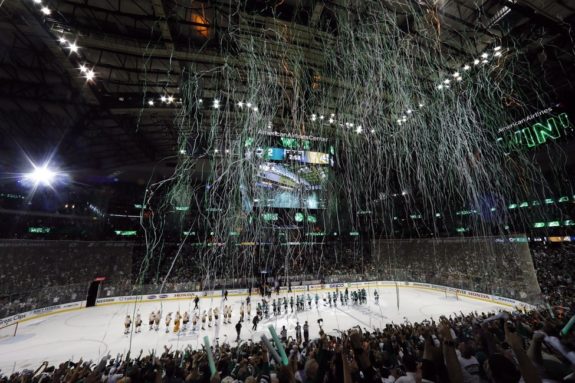Ask a sports fan in Dallas what teams they hate the most, you’ll hear different answers from different people. Football fans will say the Cowboys biggest rivals are the Philadelphia Eagles and the New York Giants. Mavericks fans will point to the San Antonio Spurs and Los Angeles Lakers. Hockey fans will say the Dallas Stars are rivals with the Colorado Avalanche or, more recently, the St. Louis Blues. But ask fans in Minneapolis or St. Paul who the Minnesota Wild’s biggest rival is, they’ll resoundingly say the Dallas Stars. And maybe fans in all of Minnesota should be pointing rage toward the Lone Star State.
Minnesota fans are students of history. Vikings of all ages will recall the great times of the Purple People Eaters and mourn Packer’s kicker Ryan Longwell’s Christmas Eve field goal in 2004. If you bring up the name of quarterback Roger Staubach, fans will talk about his incredible ‘Hail Mary’ pass that brought the Cowboys victory over the Vikings in the 1975 NFL Playoffs. But there’s another reason, a hockey reason why Minnesota fans should hold the name Staubach and Cowboys in animosity.
A Team Without Fans
The story begins with a struggling team in Minnesota. The Minnesota North Stars were part of the NHL’s 1967 six-team expansion. Fans were excited for the team arrival but the good times would not last. During the 1970s-80s the North Stars started seeing attendance decline, despite the franchise’s playoff appearances. Minnesota experienced financial problems and things were not looking good for the franchise. John Zeigler Jr., former president of the NHL and chairman of the NHL marketing committee, approached Norman Green about buying the North Stars and keeping the team in Minnesota.

Green was a Canadian born shopping mall developer and businessman turned hockey executive. In 1979, he was part of a group that bought the Atlanta Flames and moved the team to Calgary. His name was etched into the Stanley Cup when the Flames took home the title in 1989. Green was interested in being apart of an expansion franchise, but those notions died when he bought the North Stars.
Related: Stars Move Forward From Jim Montgomery Firing
“As one of the lead and original owners of the Calgary Flames—enjoying 10 years of financial success, including winning the Stanley Cup in 1989—I was convinced that my experience in marketing could rekindle the support of the Minnesota fans,” Green wrote in a D Magazine autobiographical piece. “But after renovating the old Met Center and producing a top team that almost won the Stanley Cup in 1991, the fans still didn’t buy the critical season tickets, and attendance still fell under 60 percent. It was obvious we needed to move.”

In 1991, the North Stars began looking for a new home. The first deal was struck in Anaheim, and the franchise being moved into a new hockey ready building. However, the deal was short-lived when Mickey Mouse got involved. Disney offered to build a new franchise for the city and use its talent to market the team. The Anaheim Mighty Ducks were born, and the North Stars were still looking for a new home.
Cowboys Come Riding In
In exchange for Disney coming into the league, the NHL approved Green to move the North Stars to any location he felt was the best deal. Looking around the country, Green reached out to the only Texan he knew: Roger Staubach.
…thoughout Green’s ownership in Minnesota, he would have phone conversations with Staubach and when Green decided it was time to move the team to Dallas he called his friend.
100 Things Stars Fans Should Know & Do Before They Die | Sean Shapiro, Mike Modano
Green was introduced to Staubach by Hartford Whalers owner Richard Gordon. Gordon knew the Cowboys great after advising him on a real estate deal during the late 70s. Gordon felt it was important for Green to be introduced to someone with credibility to the Dallas area.
“At first, I was skeptical when Norm called me,” Staubach said. “I thought, “Why would this team leave Minnesota?’ I think they will move. Dallas is a bigger market.’”
‘How Cowboys Hall of Famer Roger Staubach helped lure the Dallas Stars from Minnesota’ | Dallas Morning News | Apr. 24, 2018
Green found the relationship with Staubach incredibly valuable, especially when it came to finding the Stars a new building to play in.
“Roger explained that Reunion Arena was originally built in 1980 for hockey and was being used only for basketball,” Green wrote. “He confirmed that it had excellent sightlines, and with some improvements, it would be a perfect interim arena until a new building, with proper revenue streams, could be built. Roger was strategic in the process to introduce us to the community, and the City Council, and helped us make an acceptable deal with Reunion.”
Mayor Steve Bartlett promised Green that the city council would approve building a new stadium quickly. Green made it clear to the mayor that the team needed an 18,000 seat arena with improved luxury suites. City Manager Jan Hart helped walk Green through the political process. That’s when the next Cowboy came riding in.
“My longtime friend Frank Gifford called a few of his friends to introduce me to Dallas,” Green said. “One of the first calls Gifford made was to Jerry Jones.”
Jones is a name that doesn’t require much introduction around sports. The Cowboys owner was a major supporter of the NHL in Dallas. Green recalls Jones as being one of the critical pieces in assuring him that Dallas was the right city. Legendary Cowboys coach Tom Landry also met with Green before the move
Dallas Loves a Winner
“We were told, Dallas loves winners, and we were bringing a top team that had been in the Stanley Cup Finals just two years previous,” Green said.
The puck dropped for the first time at Reunion Arena on Oct. 5, 1993, against the Detroit Red Wings. Victory Green was now a color representing Dallas. Mike Modano had his best season with 50 goals and 93 points. The Stars won 42 games, recorded 97 points, and swept the St. Louis Blues in the first round of the playoffs. The Stars were a hit in Big D.
“We quickly knew we had made the right decision, as our attendance and average ticket price were more than double what we received in Minnesota,” Green recalled.
Green would sell the Stars after the 1994 lockout, but the train did not stop rolling. Since the Stars arrival, the team is one of the most successful sports franchises in Dallas, making 14 postseason appearances and earning eight division championships and two Presidents’ Trophies. In 1999, the franchise won its first Stanley Cup and would be back in the finals the next season.
Related: Top Stars Getting Outshined by Unsung Heroes in Dallas
“In 1993, there was only one poor sheet of ice at Valley Ranch. Now there are almost 30 in the area, with tens of thousands of young people playing hockey and participating in skating programs,” Green said. “I look back with incredible pride at the decision to bring the NHL to Dallas.”

In 1999, Tom Hicks gave Green a ring after winning the Stanley Cup. Green says he wears it every day with the exception of when he plays golf. But maybe “Roger the Dodger” is owed a third championship ring to wear. Without a couple of phone calls and being shown around town, who knows where the Stars would be playing?